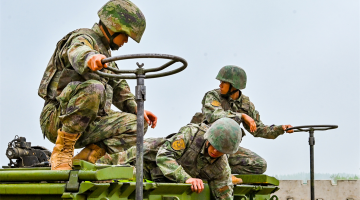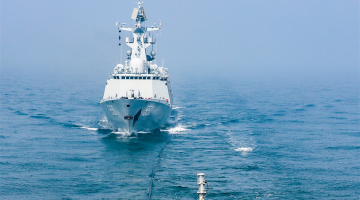
By Fang Xiaozhi
The US has announced to withdraw troops from Europe recently, first in July when it vowed to pull nearly 12,000 troops from Germany starting in September, leaving only 25,000 soldiers there, then in August when it announced to withdraw about 700 soldiers from Norway, leaving only 20 in the country.
Such a move has much to do with America’s adjustment of domestic policies and the changes in the international situation. Uncle Sam has stationed troops in many countries after the end of WWII, which has made it an essential pillar for Europe’s regional security and also served as a bond to intensify America’s defense cooperation with European countries.
However, the Trump administration’s strong push of the “America first” strategy and adjustment of its European policies since taking office has aggravated its conflicts and divergences with Europe and NATO members on such issues as military budget, NATO’s position, Iran nuclear deal, and the INF Treaty. To put pressure on Europe, Washington has threatened to call back its troops stationed there many times and even to quit NATO, trying to bend Europe to make concessions on relevant issues as Washington requests.
Washington’s continuous announcement to withdraw troops from Europe has caused an uproar within NATO, with the members all condemning it for abandoning its decades-long commitment to the European allies’ collective security. Norway is especially angry as it is considered the “gateway” on NATO’s land border for its important geostrategic values.
US unilateral pull-out of Norway will leave a gap on NATO’s land border and largely undermine the military bloc’s defense capability against Russia. Moreover, Washington didn’t give prior notice to Norway about the planned withdrawal but only notified the country when all the preparations were made, and it was ready to leave, indicating an increasingly apparent tendency of unilateral actions on the American side. As a result, the rift between Washington and its NATO allies has been widening, and the consequent chain effects will seriously shake NATO’s strategic stability, even push the bloc to the brink of collapse.
Posing a sharp contrast to its pull-out of Europe, the US military has stepped up the military deployments in the Asia Pacific recently. Its enhancement of regional military presence by increasing military input and advancing forward deployments has demonstrated a clear shift of its strategic priority.
For instance, on June 8, the US Navy announced that it would dispatch two aircraft carriers - USS Nimitz and USS Ronald Reagan - to patrol the Asia Pacific, putting an end to about two months’ “carrier vacuum” in the West Pacific. At present, the USS Theodore Roosevelt has also been deployed to the region, increasng the number of American aircraft carriers in the Pacific Ocean to three.
On June 11, the US Senate Committee on Armed Services passed the National Defense Authorization Act for Fiscal Year 2021, giving a nod for the first time to set up the Pacific Deterrence Initiative that’s primarily targeted at the Asia-Pacific region. According to the initiative, the US will ramp up efforts to transform and develop its military forces in Asia Pacific, intensify the integrated operation capability in the region, and create a forward-position operational force with stronger strategic deterrence and better combat preparedness by improving the military structure, tightening military relation with allies and partners, and expanding joint exercises and training. Besides, the US is also seeking to deploy more medium-range missiles in the Asia Pacific. All these moves attest to the Asia Pacific region’s great importance in its global strategy.
As far as the US is concerned, pulling some troops from Europe doesn’t mean it will give up its global hegemony. It’s at most just an adjustment of its troops stationed at military bases worldwide and of its military deployments in response to changes in its strategic priorities and security threats.
Scaling down its military presence in Europe is intended to force its European allies to bear more responsibilities within NATO, so that Washington can dedicate more energy in shifting its strategic focus to the east, further consolidating its military forces in Asia, and better dealing with the “major-country competition” from the Indo-Pacific region.
(The author is a researcher at the Institute of Strategic Studies and International Security under Fudan Institute of Belt and Road & Global Governance. All the contents in the article represent the author's opinions and don’t necessarily reflect the views of eng.chinamil.com.cn. )









